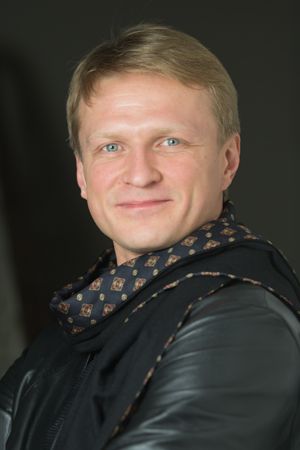
Whatever different styles of production the dancer turns to he is a natural in all of them, you believe his heroes, there is no narcissism in them, the dance here is a dance of the soul, of the characters’ inner worlds. Isn’t that what audiences care about most?
Tybalt – Ilya Kuznetsov – was no less thrilling. An impertinent and chestnut-haired rogue with a “lock of passion” that would coquettishly fall on his forehead and which he, an incorrigible duellist and scrapper, which he never forgot to set right carefully. Wild fury and passion lead him through life in a search for bloody adventures. His sword is an extension of his arm, it whips in a quarrelsome manner and makes rude cuffs on the nape as well as insulting slaps. With such energy and his boiling temperament, Mt Kuznetsov win hockey’s world championship all by himself!
Who said that artiste dancers have vanished today? The best answer to that is the great work of Ilya Kuznetsov.
• People’s Artist of the Republic of North Ossetia-Alania (2014)
• Honoured Artist of Russia (2009)
• Recipient of the Golden Sofit, St Petersburg’s most prestigious theatre prize (2000–2001 season) for “Best role in ballet” for the ballet Sounds of Empty Pages and the role of the Hooligan in the ballet The Young Lady and the Hooligan
Born in Samara.
Graduated from the Vaganova Academy of Russian Ballet in 1995 (class of Vladilen Semyonov).
With the Mariinsky ballet from 1995 to 2014.
Soloist since 1997.
Repertoire includes:
Giselle (Count Albrecht, Hans); choreography by Jean Coralli, Jules Perrot and Marius Petipa,
Le Corsaire (Conrad); production by Pyotr Gusev after the composition and choreography by Marius Petipa,
La Bayadère (Slave); choreography by Marius Petipa, revised version by Vladimir Ponomarev and Vakhtang Chabukiani,
The Sleeping Beauty (Prince Charming, Carabosse the Wicked Fairy); choreography by Marius Petipa, revival of the 1890 production,
Swan Lake (Prince Siegfried, von Rothbart); choreography by Marius Petipa and Lev Ivanov, revised version by Konstantin Sergeyev,
Raymonda (Abderakhman, Jean de Brienne); choreography by Marius Petipa, revised version by Konstantin Sergeyev,
Don Quixote (Espada); choreography by Alexander Gorsky,
The Firebird (Ivan Tsarevich); choreography by Michel Fokine,
The Fountain of Bakhchisarai (Ghirei, Vaslav); choreography by Rostislav Zakharov,
Spartacus (Spartacus, Harmodius); choreography by Leonid Yakobson,
Romeo and Juliet (Romeo, Tybalt); choreography by Leonid Lavrovsky,
The Legend of Love (the Vizier); choreography by Yuri Grigorovich,
Leningrad Symphony (Youth); choreography by Igor Belsky,
The Young Lady and the Hooligan (Hooligan); choreography by Konstantin Boyarsky,
George Balanchine’s ballets Apollo (Apollo), Serenade, Symphony in C (II. Adagio) and La Valse,
Carmen-Suite (José, Torero); choreography by Alberto Alonso,
In the Night (3rd movement); choreography by Jerome Robbins,
Études; choreography by Harald Lander,
Manon (Des Grieux); choreography by Kenneth MacMillan,
The Nutcracker (Nutcracker Prince); production by Mihail Chemiakin, choreography by Kirill Simonov,
Alexei Ratmansky’s ballets Le Poème de l’extase, The Little Humpbacked Horse (the Tsar) and Anna Karenina (Karenin),
John Neumeier’s ballets Now and Then and Sounds of Empty Pages,
Aria Suspended (Soloist); choreography by Peter Quanz,
Presentiment of Spring (Yarilo); choreography by Yuri Smekalov
and Errand into the Maze; choreography by Martha Graham.
Repertoire also includes:
Carmen (José); choreography by Roland Petit,
Trois Gnossiennes; choreography by Hans van Manen,
Sapphires; choreography by Georgy Aleksidze
and Walpurgisnacht (Bacchus); choreography by Leonid Lavrovsky.
